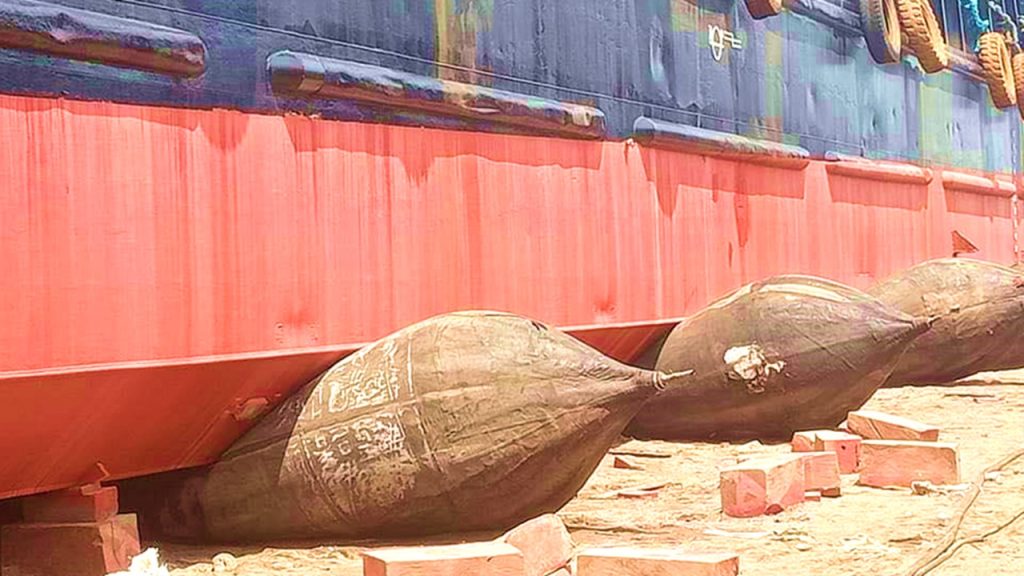Fiberglass boats have long been the lifeline of coastal communities in the Philippines, serving as vital tools for fishing, transportation, and tourism. However, with constant exposure to rough seas and unpredictable weather conditions, these vessels are often left battered and in need of repair. Behind the scenes of this essential industry lies a group of skilled artisans who possess unparalleled expertise in fiberglass boat repair. In this article, we delve into the intricate world of boat restoration in the Philippines, uncovering the secrets behind their craftsmanship and exploring how they keep these vessels afloat against all odds.
Click here to view our ship repair service capabilities in Tanza, Cavite.
The Importance of Fiberglass Boats in the Philippines
Fiberglass boats have become an integral part of the Philippines’ maritime culture and economy. With its remarkable durability, lightweight construction, and versatility, fiberglass has revolutionized the fishing industry in this archipelagic nation. In a country where fishing is not just a hobby but a way of life for many communities, the importance of these boats cannot be overstated.
One key advantage of fiberglass boats is their resistance to corrosion in saltwater environments. While traditional wooden boats require constant maintenance and frequent repairs due to rot and deterioration caused by seawater exposure, fiberglass boats remain resilient in harsh marine conditions. This durability translates into cost savings for Filipino fishermen who rely on their vessels as their livelihoods—a well-maintained fiberglass boat can last for several decades with minimal repairs.
Moreover, the design flexibility offered by fiberglass allows boat builders to craft custom-made vessels tailored to specific fishing needs. Whether it’s a small bangka or a larger commercial fishing vessel, fiberglass can be molded into various shapes and sizes without compromising on strength or functionality. This adaptability ensures that Filipino fishermen are equipped with reliable vessels suited for navigating shallow waters around coral reefs as well as facing rough sea conditions when venturing farther offshore.

Understanding the Common Types of Fiberglass Boats in the Philippines
When it comes to fiberglass boats in the Philippines, there are several common types that cater to different needs and preferences. One of the most popular types is the recreational or leisure boat, which varies in size and design depending on its intended use. These boats are often used for fishing, cruising, and island hopping. They feature comfortable seating areas, sun decks, and sometimes even small cabins for overnight stays. Recreational fiberglass boats are typically built to withstand the harsh maritime conditions in the country.
1. Open Fisherman Boats: Versatile and Spacious Designs
Open fisherman boats are a popular choice among fishing enthusiasts for their versatile and spacious designs. These boats are specifically designed to provide ample space for fishing equipment, as well as comfortable seating for passengers. One of the key advantages of open fishing boats is their flexibility in terms of customization options. Many boat manufacturers offer various layouts and configurations, allowing owners to tailor the boat to their specific needs.
The spacious design of open fisherman boats also allows for easy movement on board. Anglers can freely move around the boat to cast their lines or reel in their catch without feeling cramped or restricted. This is particularly beneficial when fishing with multiple people on board, as it ensures everyone has enough space to carry out their tasks efficiently.
Moreover, the versatility of open fishing boats extends beyond just fishing. These boats can be used for various recreational activities, such as cruising or water sports, like wakeboarding and skiing. The wide deck area provides plenty of room for lounging and enjoying time on the water with family and friends.
Open fisherman boats offer both functionality and comfort with their versatile and spacious designs. Whether you’re an avid angler or simply enjoy spending time on the water, these boats provide ample space for all your needs. Their flexibility in customization options makes them a popular choice among boat owners looking for a vessel that suits their unique preferences.
Open Fisherman Fiberglass Boat Repair
When it comes to open fisherman fiberglass boat repair, there are several key factors that need to be taken into consideration. Firstly, the extent of the damage will greatly impact the repair process. Whether it’s a minor crack or a complete structural failure, experienced technicians can assess and determine the best course of action for fixing the boat. Additionally, finding skilled craftsmen who have the knowledge and expertise to work with fiberglass is crucial for achieving high-quality repairs.
Another important aspect of open fisherman fiberglass boat repair is selecting the right materials. Fiberglass resin and cloth are commonly used in repairs as they provide strength and durability. However, there are different types of resins available, such as epoxy resin, which offers superior bonding properties. Choosing the appropriate resin ensures that the repaired area will withstand harsh marine environments and maintain its integrity over time.
Furthermore, one should also consider how water intrusion affects composites during repairs. Water can seep into cracks and further weaken structures if not properly addressed during the repair process. It is essential to thoroughly dry out any affected areas before applying resins to ensure maximum adhesion and prevent future water-related issues.
Open fisherman fiberglass boat repair requires careful assessment of damages, selection of suitable materials, and proper handling of water intrusion concerns throughout the restoration process. These considerations play a vital role in ensuring long-lasting results that preserve both functionality and aesthetics while maintaining safety standards on the open sea.

2. Center Console Boats: Ideal for Fishing Enthusiasts
Fishing is not just a hobby but a passion for many enthusiasts. And when it comes to fishing in open waters, having the right boat can make all the difference. That’s where center console boats come in. These versatile and practical vessels are ideal for fishing enthusiasts who want to take their angling adventures to the next level.
One of the key advantages of center console boats is their spacious layout and unobstructed deck space. With no cabin or walls limiting your movement, you have ample room to cast your line from any angle without restrictions. This means you can easily maneuver around the boat while fighting a big fish, providing you with better control and increasing your chances of landing that trophy catch.
Furthermore, center console boats offer great visibility as they provide an open platform with no obstructions blocking your view. This enables anglers to spot fish more easily and react quickly when opportunities arise. Whether you prefer stalking shallow flats or heading out to offshore hotspots, having a clear line of sight can greatly enhance your fishing experience.
In addition, these boats usually come equipped with plenty of storage compartments for storing tackle boxes, rods, reels, and other gear essential for a successful day on the water. No longer will you have to sacrifice comfort or worry about cluttering up valuable space, as everything can be neatly organized within easy reach.
All in all, if you’re serious about fishing and want a boat that offers functionality alongside excellent performance on the water – look no further than a center console boat!
Center Console Fiberglass Boat Repair
When it comes to center console fiberglass boat repair, attention to detail is crucial. These boats are built with a specific design in mind, and any damage can compromise their structural integrity and performance on the water. Repairing a fiberglass center console requires a skilled technician who understands the unique challenges involved.
One of the main issues that arise with these boats is gel coat damage. Gelcoat is the protective outer layer of fiberglass that gives the boat its glossy finish. Over time, UV exposure, collisions, or simple wear and tear can cause the gel coat to crack or chip. Repairing these damages requires careful sanding and filling before applying new layers of gel coat to match the original color.
Another common problem found in center console fiberglass boats is delamination. This occurs when the layers of fiberglass separate from each other due to water infiltration or impact damage. Delamination weakens the overall structure of the boat and can lead to more severe issues if left untreated. Repairs involve removing damaged sections, drying them out completely, and bonding them back together using specialized adhesives for a seamless repair.
Center console fiberglass boat repair demands expertise and precision since even minor damages can have significant consequences for both safety and performance on the water. By addressing issues such as gelcoat damage and delamination promptly with professional assistance, boat owners can enjoy many years of trouble-free boating experiences.

3. Pontoon Boats: Great for Leisure Activities on Water
Pontoon boats are a fantastic option for those looking to enjoy leisure activities on the water. Unlike traditional fiberglass boats, pontoon boats offer a spacious and stable platform that is perfect for relaxing and entertaining. With their multiple pontoons, these boats provide excellent stability, making them ideal for activities such as fishing, sunbathing, or simply cruising along calm waters.
One of the key advantages of pontoon boats is their versatility. They can be customized with various features and amenities to suit individual preferences and needs. From comfortable loungers to built-in grills and wet bars, pontoon boat owners have endless possibilities when it comes to creating their ultimate water-based oasis.
Additionally, pontoon boats are also great for larger groups or families. With plenty of room onboard, everyone can spread out and enjoy their favorite activities without feeling cramped or crowded. Whether it’s hosting social gatherings or taking your loved ones on an unforgettable day trip, pontoon boats provide ample space for entertainment while maintaining comfort and safety.
If you’re looking to elevate your leisure experience on the water, consider investing in a pontoon boat. Versatile, spacious, and stable, these floating oases offer endless opportunities for relaxation and fun-filled moments with friends and family. Whether you’re into fishing or simply soaking up the sun’s rays in style, a pontoon boat provides everything you need to make unforgettable memories on the water.
Pontoon Fiberglass Boat Repair
Pontoon fiberglass boats are a popular choice for many outdoor enthusiasts thanks to their durability and versatility. However, just like any other boat, they can be prone to damage over time. When it comes to pontoon fiberglass boat repair in the Philippines, there are a few key points to consider.
Firstly, it is important to understand that not all damages require professional repair. Minor scratches or cracks can often be fixed with DIY fiberglass repair kits available on the market. These kits come with everything you need to mend small damages quickly and easily.
However, for more extensive repairs, such as major structural damage or large cracks, seeking professional help is highly recommended. Professional fiberglass boat repair services have the expertise and specialized tools needed to fix these issues effectively and ensure the integrity of your pontoon boat.
Lastly, regular maintenance goes a long way in preventing major repair work down the line. Inspecting your pontoon regularly for any signs of wear or damage and addressing them promptly can save you time and money in the long run.
While minor repairs on pontoon fiberglass boats can often be done by oneself using DIY kits, it is best to consult professionals for major damages. Additionally, regular maintenance plays an essential role in preventing costly repairs later on.
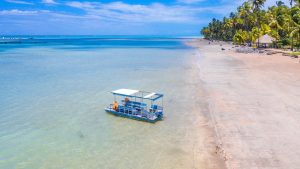
4. Cabin Cruisers: Comfortable Vessels for Overnight Stays
Cabin cruisers are the epitome of comfort and luxury when it comes to overnight stays on the water. These majestic vessels provide all the necessities for a cozy and enjoyable experience in open water. With spacious cabins, fully equipped kitchens, bathrooms, and living areas, cabin cruisers offer the perfect blend of functionality and comfort.
One of the main advantages of cabin cruisers is their versatility. Whether you’re planning a weekend getaway with friends or a family vacation, these boats can accommodate everyone’s needs. The multiple sleeping quarters allow for privacy while still enjoying time together in common areas like the lounge or dining area. Imagine waking up to breathtaking views while sipping your morning coffee on the deck or enjoying a peaceful sunset dinner as you watch nature unfold around you.
Moreover, cabin cruisers often boast added amenities such as air conditioning systems, entertainment systems, and even outdoor grills. This means that no matter what the weather conditions may be outside, you can always find ways to stay comfortable inside your vessel. Whether you choose to unwind with a movie night or have an impromptu barbecue on deck, cabin cruisers offer endless opportunities for relaxation and entertainment.
Overall, if you’re looking for an unforgettable experience on the water with all the comforts of home, consider renting or owning a cabin cruiser. These vessels will provide you with everything needed for a memorable overnight stay – from stunning panoramic views to luxurious accommodations, making them truly unbeatable options for any boat enthusiast seeking an extraordinary adventure at sea.
Cabin Cruisers Fiberglass Boat Repair
When it comes to fiberglass boat repairs, cabin cruisers demand a unique set of skills and expertise. These luxurious vessels are designed for comfort and functionality and are often equipped with lavish amenities such as sleeping quarters, kitchens, and entertainment systems. But their intricate construction can present challenges when damage occurs.
The repair process for cabin cruisers involves careful assessment of the fiberglass structure, as well as the various systems that make these boats a home away from home. From repairing gel coat cracks to fixing structural issues caused by collisions or wear and tear, skilled technicians must have a comprehensive understanding of each component’s function and how it contributes to the overall integrity of the vessel.
Unlike smaller fiberglass boats, cabin cruisers require meticulous attention to detail during repair work. Every aspect must be considered – from matching gel coat colors precisely to ensuring all electrical connections are restored safely. With proper craftsmanship and knowledge in hand, fiberglass specialists can restore these magnificent vessels back to their former glory.

Common Issues: Common Problems Faced by Fiberglass Boats
Fiberglass boats have long been a popular choice for boating enthusiasts due to their durability and versatility. However, like any other type of boat, they are not without their fair share of common issues. One common problem faced by fiberglass boat owners is osmotic blistering. This occurs when water seeps through the outer gel coat and gets trapped between the layers of fiberglass, causing blisters to form on the hull. Not only do these blisters detract from the boat’s appearance, but they can also compromise its structural integrity if left untreated.
Another frequent issue encountered with fiberglass boats is stress cracking. These small cracks can develop over time due to a variety of factors, such as impact or excessive flexing of the hull. While stress cracks may start out small and seem insignificant, if ignored or neglected, they can lead to more extensive damage that requires costly repairs down the line.
Additionally, delamination is another prevalent problem found in fiberglass boats. Delamination occurs when there is a separation between the layers of fiberglass or between the fiberglass and core materials used in construction. This can be caused by factors such as water intrusion, exposure to extreme temperatures, or poor-quality construction techniques. Delamination not only compromises the structural integrity of the boat but also leads to an unattractive appearance and reduced resale value.
Addressing these common issues promptly and seeking professional assistance when necessary will help ensure that your fiberglass boat remains in top condition for many years to come.

Advantages of Fiberglass Boats for Filipino Ship Enthusiasts
Another advantage of fiberglass boats for Filipino ship enthusiasts is their durability. Fiberglass is known for its strength and resistance to damage, making it a reliable material for boat construction. This is especially important in the Philippines, where ships often have to navigate through rough seas and unpredictable weather conditions. The sturdy nature of fiberglass ensures that these boats can withstand the elements and continue to perform well, even after years of use.
In addition, fiberglass boats are relatively low-maintenance compared to other materials such as wood or steel. Unlike wooden boats that require regular varnishing and oiling to protect them from rot and deterioration, fiberglass boats only need occasional cleaning and waxing to maintain their appearance and structural integrity. This makes them a practical choice for Filipino boat owners who may not have the time or resources for constant upkeep.
Furthermore, fiberglass boats offer better fuel efficiency compared to other types of hull materials, such as aluminum or steel. Their lightweight construction allows them to glide more smoothly through the water, reducing drag and increasing speed. This not only saves on fuel costs but also enables Filipino ship enthusiasts to reach their destinations faster, maximizing their time on the water.

Step-by-Step Guide to Fiberglass Boat Repair in the Philippines
First and foremost, before attempting any fiberglass boat repair in the Philippines or anywhere else, it is essential to assess the extent of the damage and gather the necessary materials for the job. This may involve removing any loose or damaged fiberglass materials, sanding down rough edges, and ensuring a clean surface for proper adhesion. Once this is done, applying a layer of gel coat can help restore the boat’s appearance while also providing added protection against further corrosion.
Next, repairing cracks or holes in the fiberglass requires careful attention to detail. Start by creating a template around the damaged area using masking tape or cardboard. Cut out a piece of fiberglass cloth slightly larger than the template and saturate it with polyester resin. Then lay it over the damaged section and gently press out any air bubbles. Allow sufficient drying time before adding additional layers, if necessary.
Finally, when all repairs have been made, finishing touches such as trimming excess material and blending colors can make all the difference in achieving a seamless look. Remember to use marine-grade paints that are specifically designed for boats to ensure long-lasting results that can withstand the harsh weather conditions faced when sailing around beautiful Philippine waters.
By following these step-by-step guidelines for fiberglass boat repair in the Philippines, boating enthusiasts can breathe new life into their vessels and tackle future adventures on the waves without compromising safety or performance. Whether it’s fixing minor damages or completely restoring an old boat, learning these repair techniques will save both time and money while preserving cherished maritime memories in one of Asia’s most picturesque settings.
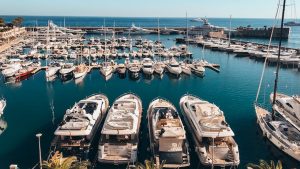
1. Assessing the Damage: Identifying Problem Areas
When it comes to fiberglass boat repair, one of the crucial steps is assessing the damage and identifying problem areas. This task requires a keen eye for detail, as well as expertise in recognizing common issues that often plague fiberglass vessels.
One of the most obvious signs of damage is cracking on the surface of the boat. These can range from hairline fractures to more significant breaks, and they are usually caused by impacts or stress. In addition to cracks, delamination is another problem area that needs to be identified. Delamination occurs when there is a separation between the layers of fiberglass, leading to weakness in the structure of the boat.
Aside from visible damage, it’s important to inspect for any water intrusion into the hull. This can be determined by checking for soft spots or blisters on the surface. Water intrusion not only compromises structural integrity but also promotes further damage through osmotic blistering.
Identifying these problem areas during an assessment is crucial for determining a proper course of action and ensuring effective repairs. It allows repair professionals in fiberglass boat repair shops in the Philippines to develop a comprehensive plan that addresses all aspects of damage and restores vessels back to their optimal condition.

2. Gathering Materials and Tools Needed
When it comes to fiberglass boat repair in the Philippines, one of the most crucial steps is gathering all the necessary materials and tools. This ensures that you have everything you need to effectively fix any damages and restore your boat to its former glory. However, sourcing these materials can sometimes be a challenge, especially if you’re not familiar with the local market.
One key insight is to explore different options for purchasing materials and tools. A good starting point is to check out local marine supply stores or fiberglass boat repair shops. These establishments often carry a wide range of fiberglass repair products, such as resin, hardener, cloth, and sanding materials. Additionally, consider looking online for specialized suppliers who may offer a more extensive selection or better prices.
Another perspective worth considering is the importance of quality when it comes to choosing your materials and tools. While it can be tempting to opt for cheaper alternatives, investing in high-quality products will ultimately result in better repairs and increased durability. Don’t hesitate to ask for recommendations from experienced boaters or consult with professionals in the industry who can provide insights on which brands or types of materials are most suitable for your specific repair needs.
By taking the time to gather all the necessary materials and tools before starting your fiberglass boat repair project in the Philippines, you’ll set yourself up for success. Exploring different options for purchasing these items and prioritizing quality will ensure that you have everything needed to tackle any damages effectively while maximizing longevity once repairs are completed.

3. Preparing the damaged area for repair
Preparing the damaged area for repair is a crucial step in fiberglass boat repair. Before any repairs can be made, it is important to assess the extent of the damage and determine the best approach for fixing it. This may involve removing any loose or damaged fiberglass material, as well as sanding down the surrounding area to create a smooth surface for the repair.
One common method used in preparing a damaged area for repair is called feathering. This involves tapering the edges of the damaged area with sandpaper to ensure a smooth transition between the repaired and existing fiberglass. Feathering helps to prevent stress concentrations that can lead to future cracks or delamination.
Another important aspect of preparation is cleaning the damaged area thoroughly before beginning any repairs. It is essential to remove any dirt, debris, or contaminants that may interfere with the adhesion of new fiberglass layers. Using acetone or another suitable solvent can help ensure a clean surface for successful repairs.
Preparing the damaged area properly sets the stage for successful fiberglass boat repair. By carefully assessing and addressing all aspects of damage before beginning repairs, you can ensure a strong and long-lasting result. Taking this time upfront will pay off in avoiding future issues and ensuring your boat remains safe on the water.
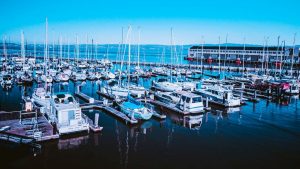
4. Applying fiberglass and resin
When it comes to fiberglass boat repair in the Philippines, applying fiberglass and resin is a crucial step that requires skill and precision. Fiberglass is a strong, lightweight material commonly used for repairs because of its durability and resistance to water damage. Resin, on the other hand, acts as a binding agent that helps reinforce the fiberglass.
One important consideration when applying fiberglass and resin is to ensure proper ventilation. Since this process involves working with chemicals, it’s essential to work in a well-ventilated area or wear protective equipment such as masks and goggles. Additionally, it’s vital to mix the resin and hardener according to the manufacturer’s instructions. This ensures proper curing time and optimal strength for your repair job.
Another aspect to keep in mind when applying fiberglass and resin for boat repairs is the technique. It’s important to lay down multiple layers of thin fiberglass cloth rather than one thick layer. This allows for better adhesion between each layer of material, resulting in a stronger overall structure. Additionally, removing air bubbles from the resin by rolling out each layer with a laminating roller will guarantee an even distribution of bonding materials throughout the repair area.
Applying fiberglass and resin can be time-consuming due to waiting periods between layers for curing. However, taking meticulous care during this process will result in a lasting repair that can withstand harsh marine environments.
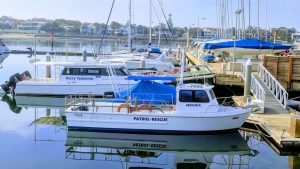
5. Sanding and finishing touches
Sanding and finishing touches are the final steps that can bring a fiberglass boat repair project to life. After all structural repairs have been made, it is crucial to put the finishing touches on the surface to ensure a smooth, polished surface. One key aspect of this process is sanding. Using different grits of sandpaper allows for the removal of any imperfections and creates a smooth surface ready for painting or refinishing.
Furthermore, sanding also helps in achieving the desired shape and contour of the repaired area, ensuring seamless integration with the rest of the boat. It requires skill and finesse to blend the repaired sections seamlessly with the existing gel coat or paintwork.
Once sanding is complete, attention can turn towards applying finishing touches such as buffing compound or sealant. These products not only protect against UV rays and water damage but also enhance the overall appearance by leaving a glossy finish on your newly repaired boat. The choice of products used at this stage plays an essential role in preserving and enhancing your boat’s aesthetics while ensuring its longevity.
Sanding and finishing touches are critical aspects of fiberglass boat repair projects that should not be overlooked. They require attention to detail as well as patience to achieve professional-looking results. By investing time and effort into these final stages, you can give your boat a new lease on life while maintaining its durability for years to come.

Tips for Preventing Future Damage
One of the best ways to prevent future damage to your fiberglass boat is by implementing regular maintenance routines. This includes cleaning and inspecting the boat regularly, as well as addressing any minor issues that may arise before they turn into major problems. By keeping a close eye on your boat’s condition, you can catch and fix potential issues early on, avoiding more complicated and expensive repairs down the line.
In addition to regular maintenance, it’s important to handle your boat with care while using it. Avoiding collisions with other boats, docks, or underwater obstacles is crucial to preventing damage. It’s also recommended to anchor properly and avoid sudden movements or abrupt stops that could put stress on the hull or other parts of the boat. Being mindful of how you use your boat can go a long way toward preserving its integrity and ensuring a longer lifespan.
Lastly, investing in quality products for your boat can greatly reduce future damage risks. Using marine-grade materials for fittings and components, such as stainless steel hardware instead of standard metal options, can provide better resistance against corrosion in saltwater environments. Similarly, using high-quality paints and coatings will protect your boat from UV rays and reduce fading or chipping over time.
By following these simple tips for preventing future damage to your fiberglass boat through regular maintenance routines, cautious handling practices, and investing in quality products, you can enjoy more extended periods of worry-free boating while preserving the value and longevity of your investment.

Tools and Materials Needed for the Job
One of the key aspects of any fiberglass boat repair job is having the right tools and materials. Without them, accomplishing a top-quality repair can be challenging or even impossible. While some basic hand tools like sandpaper, putty knives, and brushes are essential for any fiberglass repair project, there are also specialized tools designed specifically for working with this material. These may include items like laminate rollers for getting rid of air bubbles, edge trimming tools for cutting and shaping fiberglass pieces precisely, and resin spreaders for applying resin evenly.
In addition to the necessary tools, choosing the right materials is crucial to ensuring a successful fiberglass boat repair. Epoxy resin is commonly used in these repairs due to its strength and durability. It provides an excellent bond between the layers of fiberglass cloth or matting while also offering resistance against water absorption. Additionally, fiberglass fabric or matting comes in different weights and weaves depending on the nature of the repair needed. Heavier-weight fabrics are typically used for structural repairs, whereas lighter-weight options may be suitable for cosmetic repairs.
Having access to high-quality tools and materials not only simplifies the job but also helps guarantee a long-lasting result that meets safety standards. Investing in such resources can make all the difference in successfully repairing a fiberglass boat and restoring it to its former glory on Philippine waters or beyond.
Finding a Reliable Fiberglass Boat Repair Shop
Are you in need of a reliable fiberglass boat repair shop? Look no further than Amaya Dockyard & Marine Services Inc. (ADMSI). With their extensive experience and expertise in the field, they have become the go-to choice for boat owners looking for cost-effective yet quality repairs.
- Email us: info@amayadockyard.com
- Call our 24-hour hotline: +63 917 633 0479
- Viber: +63 917 633 0479
- WhatsApp: +63 917 633 0479
- Facebook Messenger: Click here
- Click here to inquire
One of the key factors that set ADMSI apart from other repair shops is its commitment to providing top-notch service at an affordable price. They understand that owning a boat can be expensive, so they work hard to ensure that their services are accessible to all boat owners. Whether you need minor repairs or more extensive work, ADMSI has got you covered.
Moreover, ADMSI is known for its attention to detail and dedication to delivering high-quality results. They have a team of skilled technicians who are well-versed in different fiberglass repair techniques and use only the best materials for their repairs. This ensures that your boat will not only look good but also perform optimally after being fixed by them.
Don’t waste your time searching for a reliable fiberglass boat repair shop any longer. Choose Amaya Dockyard & Marine Services Inc. (ADMSI) for cost-effective and quality repairs that will exceed your expectations.

The Cost of Fiberglass Boat Repair in the Philippines
Fiberglass boat repair in the Philippines can vary greatly in cost depending on the extent of the damage and the scope of work required. Factors such as the size of the boat, type of damage, and materials needed all play a significant role in determining the final price tag.
Minor repairs that involve patching small holes or cracks can be relatively affordable, costing anywhere from ₱50,000 to ₱500,000. However, more extensive damage, such as structural issues or significant hull repairs, can easily escalate into millions of pesos. It’s important to keep in mind that labor costs also come into play and may differ depending on where you’re located within the country.
Furthermore, it’s essential to consider whether additional materials will be required during the repair process. For instance, if your boat needs its gel coat repaired or replaced entirely due to extensive fading or cracking, this will result in higher costs compared to a simple fiberglass patch job.
Overall, it is crucial to consult with a reputable fiberglass boat repair service provider who can assess your specific situation and provide an accurate estimate detailing both labor and material expenses. Keep in mind that investing in quality repairs now can save you money down the line by preventing further deterioration and ensuring your boat’s longevity and performance on Philippine waters.

Skills for an Effective Fiberglass Boat Repair in the Philippines
Effective repairs on fiberglass boats require a diverse set of skills and knowledge. While basic carpentry and repair abilities are necessary, expertise in working with fiberglass materials is essential. Understanding the structural integrity of the boat, as well as knowing how to identify weak spots or previous repairs that may need attention, can make a significant difference in the quality of the repair.
In addition, familiarity with specialized tools and equipment for working with fiberglass is crucial. These materials can be difficult to work with due to their unique properties, so having the right tools can ensure smooth repairs without causing further damage. Furthermore, an expert in fiberglass boat repair should also possess knowledge of various adhesives and resins that are suitable for different types of repairs.
Moreover, being up-to-date on the latest techniques and best practices in fiberglass boat repair is imperative. Technology is constantly evolving, which means that there may be new methods or products available that can enhance the durability and longevity of repairs. Staying educated about industry advancements ensures that an expert repair technician can provide the most efficient and effective solutions for their clients’ needs.
Overall, achieving successful fiberglass boat repairs requires a combination of hands-on skills, technical knowledge, proper tools, and a commitment to ongoing learning within this specialized field. By acquiring these attributes and continuously honing their craft, experts in fiberglass boat repair have what it takes to restore these vessels to peak performance while ensuring safety on every voyage.

Takeaway: Behind Fiberglass Boat Repair in the Philippines
In conclusion, fiberglass boat repair plays a vital role in supporting the fishing industry and leisure activities in the Philippines. The skilled craftsmen behind these repairs are often underrated and underappreciated. Their ability to restore damaged boats to their former glory not only ensures safety on the water but also preserves cultural traditions and livelihoods.
Moreover, fiberglass boat repair facilities are hubs of innovation and sustainability. The use of modern techniques such as gel coat restoration and vacuum infusion processes allows for both efficient repairs and reduced environmental impact. Considering the archipelagic nature of the Philippines, these repair facilities play a crucial function by ensuring that boats continue to be seaworthy, connecting remote communities, and enabling trade.
Overall, understanding what goes on behind fiberglass boat repairs in the Philippines reveals a fascinating world of skillful craftsmanship, sustainable practices, and extensive networks that tie together various sectors of society. It is an essential reminder that sometimes what may seem like routine maintenance holds significant value for entire communities relying on these vessels for their day-to-day needs.

